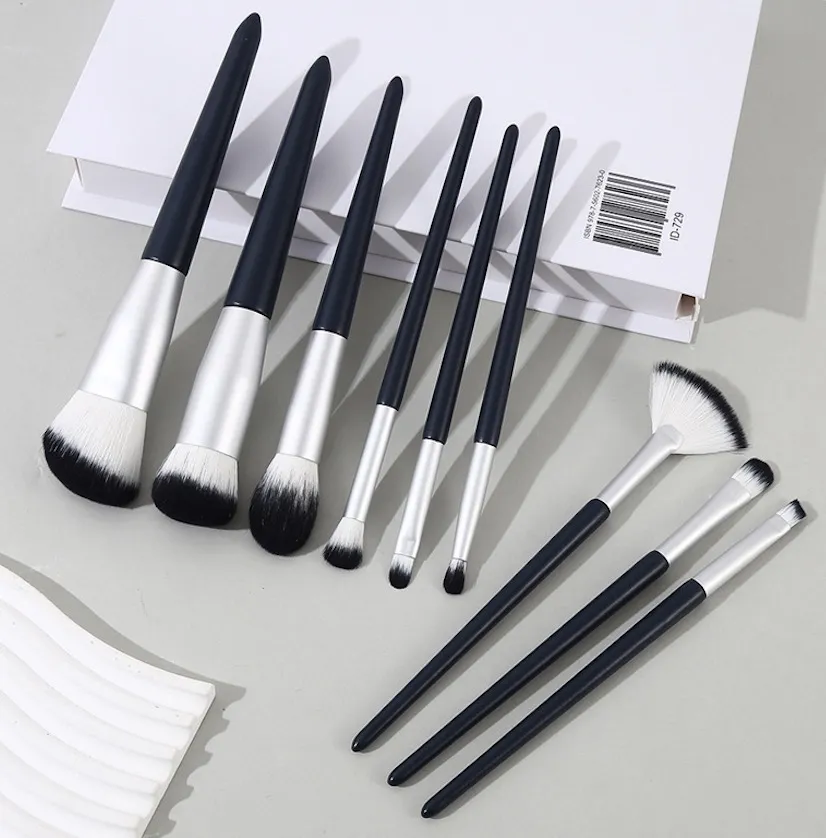Your brushes are key to a flawless look, but old tools can cause breakouts and patchy application. Here’s how to know when it’s time for a replacement.
Most quality makeup brushes1 last several years with proper care. Replace them immediately if bristles shed, the shape is lost, the handle is loose, or they cause skin irritation.
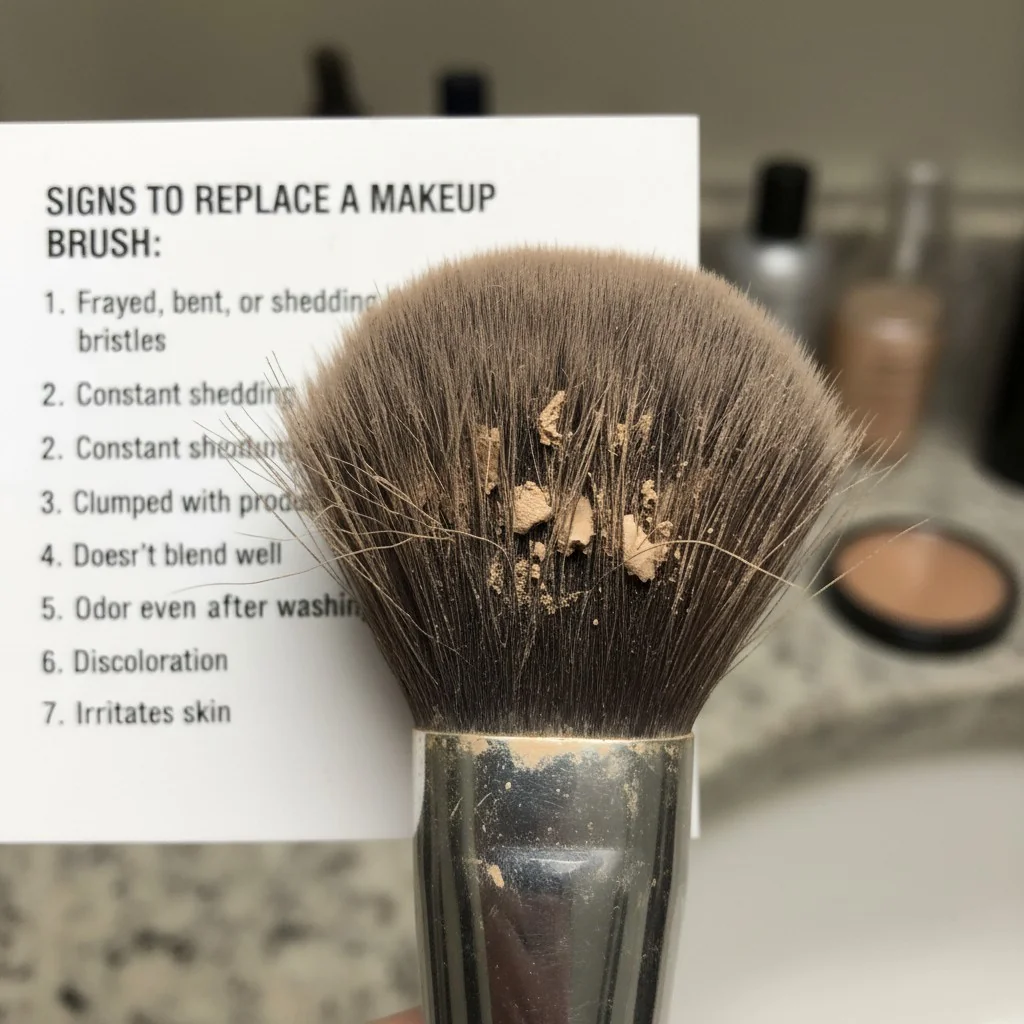
Knowing the exact moment to retire a makeup brush can feel like a guessing game. For brand owners and professional artists, this isn’t just about performance—it’s about hygiene2, client safety, and budget management. As someone who has spent years on the factory floor seeing how brushes are made, I can tell you that a brush’s lifespan isn’t a fixed date on a calendar. It’s a story told by its performance, its feel, and its construction. Let’s move beyond simple timelines and look at the practical, real-world signs and standards that should guide your replacement strategy. This guide will give you the confidence to build a clear, actionable plan for your brand.
You must replace all makeup brushes every 3 months.False
This is a very conservative view, more applicable to makeup sponges. Most quality brushes, with proper care, last for several years. Replacement should be based on wear and tear, not a strict timeline.
Washing brushes weekly can extend their life and protect your skin.True
The American Academy of Dermatology recommends washing makeup brushes every 7 to 10 days to remove harmful bacteria, oil, and dead skin cells that cause breakouts and degrade bristles.
How often should professional brands replace makeup brushes?
Your professional kit faces constant use and cleaning, which wears brushes out faster. Guessing when to replace them risks client safety and your brand’s reputation. Here’s a clear schedule.
For professional kits3, plan to refresh high-use face brushes every 24–36 months and eye brushes every 24–48 months. Sponges need replacing much sooner, typically every 3–6 months.
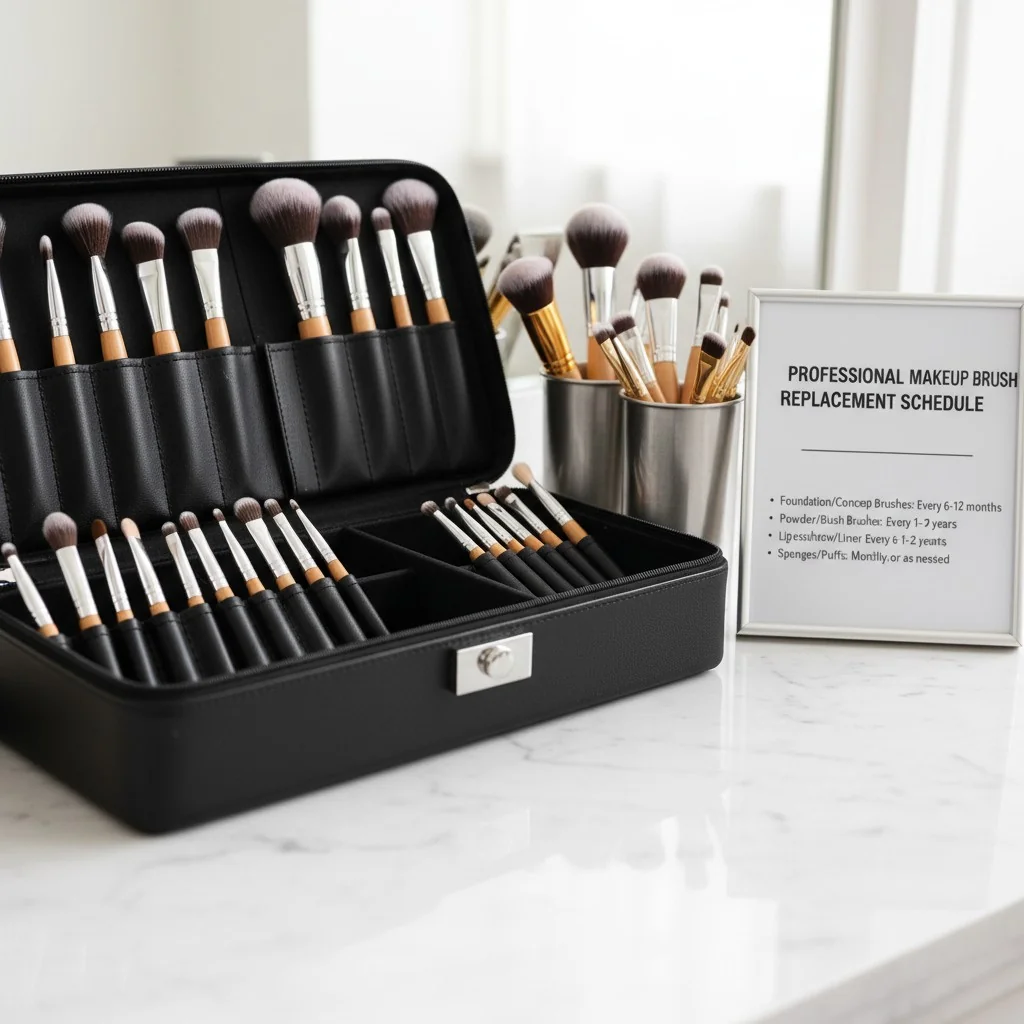
In a professional setting, time-based replacement schedules are about managing risk and ensuring consistency. You can’t afford to have a brush fail mid-application. From my experience working with hundreds of brands, establishing a clear Standard Operating Procedure (SOP) for your tools is non-negotiable. It protects your clients and your bottom line.
Here’s a simple framework I recommend to my clients:
B2B Replacement Cycles
- High-Throughput Studios & Retail Testers: These brushes see the most action and the most aggressive cleaning. Plan to refresh core face brushes (foundation, powder) every 24–36 months. Smaller, detailed eye brushes can often last a bit longer, around 24–48 months. Always keep a backup stock ready.
- Education & Training Kits: These kits are used less frequently than studio brushes. You can often extend their life, but a quarterly quality check is crucial. Replace any brush that shows signs of failure immediately.
- makeup sponges4: Due to their porous nature, sponges are a breeding ground for bacteria and are difficult to fully sanitize. Replace them every 3–6 months without exception, especially in a professional environment.
These timelines are a guide. The most important rule is to replace any tool the moment it fails a physical inspection, regardless of its age.
Makeup sponges and brushes have the same lifespan.False
Sponges are far more porous and harder to clean, making them a higher contamination risk. They should be replaced every 3-6 months, while brushes can last for years.
Brands should create a formal hygiene SOP for their artists and retail counters.True
A standardized procedure for cleaning, storing, and inspecting brushes ensures client safety, maintains brand reputation, and extends the life of the tools, reducing long-term costs.
What are the 8 signs it’s time to replace a brush?
You know your brushes won’t last forever. But waiting until they’re obviously falling apart means you’ve already been getting a poor application. Know the early warning signs.
It’s time to replace your brush if you notice shedding, a frayed shape, stiff or scratchy bristles, a loose handle, a bad smell, or if it causes skin irritation5.
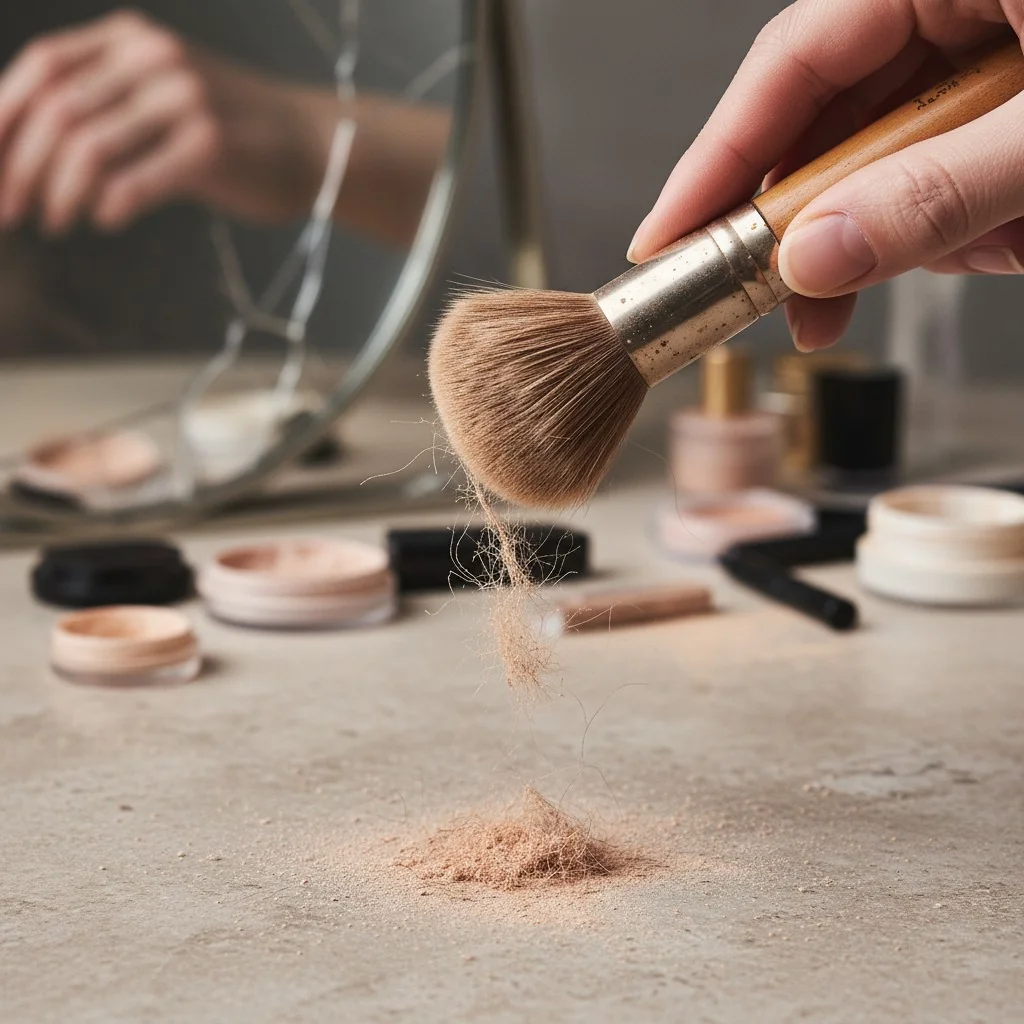
A brush’s performance degrades long before it completely falls apart. As a manufacturer, I can tell you these signs point to a breakdown in the brush’s core components—from the fibers themselves to the glue holding them in place. Catching these signs early means you’re always delivering the best results for your clients or yourself.
Here are the eight key failure signs to look for during your quarterly checks:
The Ultimate Replacement Checklist
- Shedding Bristles: A few stray hairs on a new brush is normal, but if it’s consistently leaving bristles on your face, the glue in the ferrule is failing.
- Frayed or Distorted Shape: Once a brush loses its original shape and won’t return to form after washing, it can’t apply product precisely. This leads to streaky or patchy results.
- Stiff or Scratchy Feel: Bristles should remain soft. If they feel rough against your skin even after cleaning, they are damaged and can cause micro-tears and irritation.
- Loose Ferrule or Handle: If the metal ferrule (the part that holds the bristles) wobbles, it’s a major red flag. This gap can trap water and bacteria, and the brush will soon fall apart.
- Lingering Odor: A persistent smell after deep cleaning means bacteria or mold has taken root deep within the bristles or ferrule.
- Persistent Residue: If you see product buildup or discoloration at the base of the bristles that won’t wash out, the brush is permanently saturated and unhygienic.
- Poor Application: Is your foundation suddenly streaky? Is your eyeshadow not blending? The brush is often the culprit.
- Skin Irritation or Breakouts: If you notice new breakouts or irritation after using a specific brush, clean it immediately. If the problem persists, toss the brush.
A wobbly handle is just a cosmetic issue.False
A loose ferrule or handle creates a gap where water and bacteria can get trapped, leading to mold, shedding, and eventual brush failure. It's a critical hygiene and structural problem.
If a brush starts shedding, it's time to replace it.True
Consistent shedding indicates that the adhesive inside the ferrule is breaking down. The brush will continue to lose its density and performance, making replacement necessary.
Do synthetic and natural brushes have different lifespans?
Choosing between natural and synthetic fibers is a key decision. But many brand owners don’t realize this choice directly impacts how long their brushes will last and what kind of care they need.
Yes, they do. synthetic brushes6 are more durable and better withstand frequent washing, making them ideal for liquids. Natural hair is more delicate but can last longer with gentle care for powders.
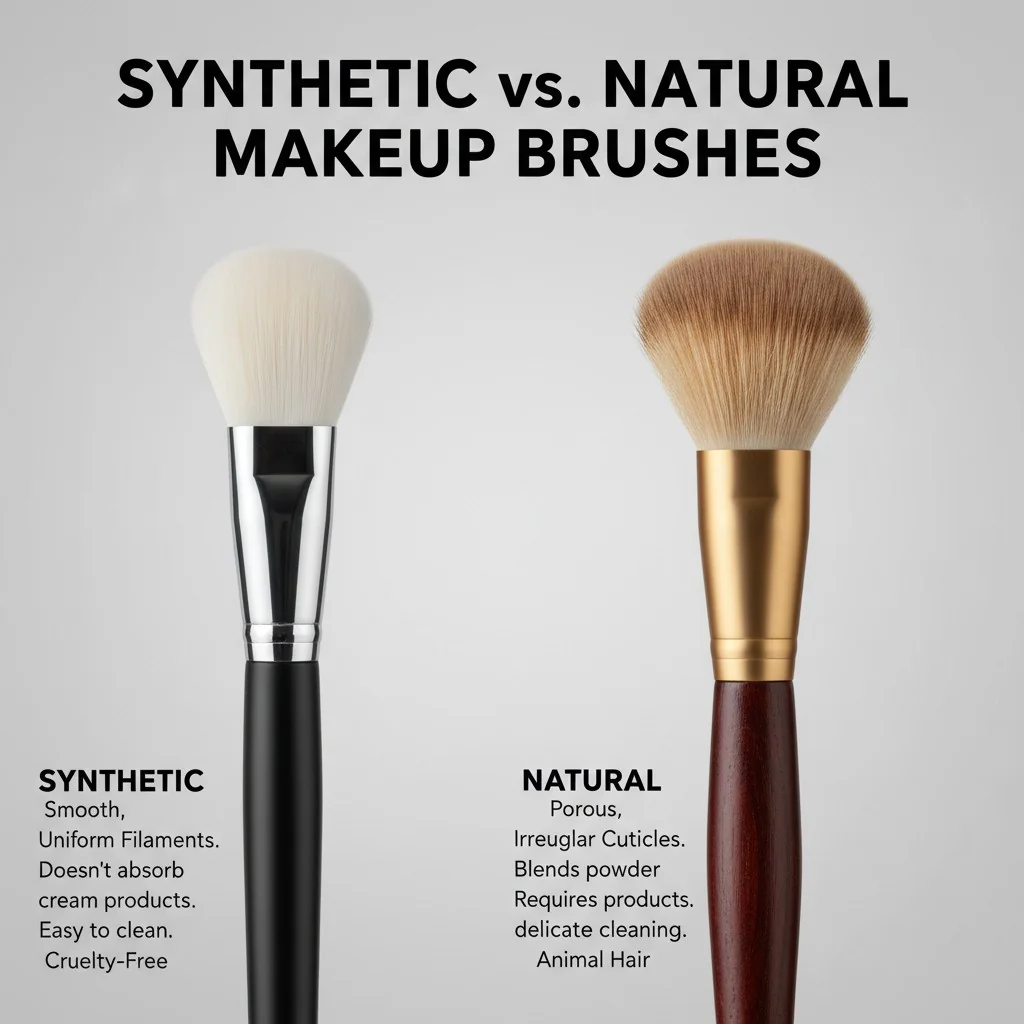
On the factory floor, I’ve worked with every type of fiber imaginable. The biggest difference comes down to structure. Natural hairs have a cuticle, just like human hair, while synthetic fibers are smooth. This changes everything from product pickup to how they react to cleaning.
Material-Specific Lifespan & Use
- Synthetic Brushes (Nylon, Taklon): These are the workhorses of a professional kit. Their non-porous fibers don’t absorb creams and liquids, making for a smoother application and easier cleaning. They are incredibly resilient and can handle the frequent, aggressive washing required in a studio setting. This is why I almost always recommend high-quality synthetics for foundation, concealer, and cream blush brushes. They offer consistency and durability.
- natural hair brushes7 (Goat, Squirrel, Sable): The cuticles on natural hairs are fantastic for picking up and diffusing powder products like eyeshadow and blush. However, these same cuticles make the fibers more fragile. Harsh soaps can strip them, and excessive water can cause them to become brittle. With gentle cleaning and occasional conditioning, a high-quality natural hair brush used only for powders can outlast a synthetic one, but it requires a stricter, more careful maintenance routine.
For my clients building a versatile brand, I often suggest a hybrid approach: durable synthetics for all cream and liquid applications, and delicate natural hairs reserved for powder products where blending is paramount.
Natural hair brushes are always better than synthetic ones.False
It depends on the use. Natural hair excels at blending powders, but modern high-performance synthetic fibers are superior for applying liquid and cream products and are more durable and hygienic.
Synthetic brushes are better for people with sensitive skin.True
Synthetic fibers are hypoallergenic and easier to keep clean, reducing the risk of bacterial buildup that can trigger acne and irritation. Natural hairs can sometimes cause allergic reactions.
What cleaning frequency protects skin and extends brush life?
Dirty brushes are a liability for your brand, causing breakouts and infections. But over-washing can destroy them just as quickly. Finding the right balance is key to protecting your investment.
Deep-clean brushes weekly (or every 7–10 days) and spot-clean between uses. This routine removes harmful bacteria, protects skin, and preserves the brush’s integrity for longer.
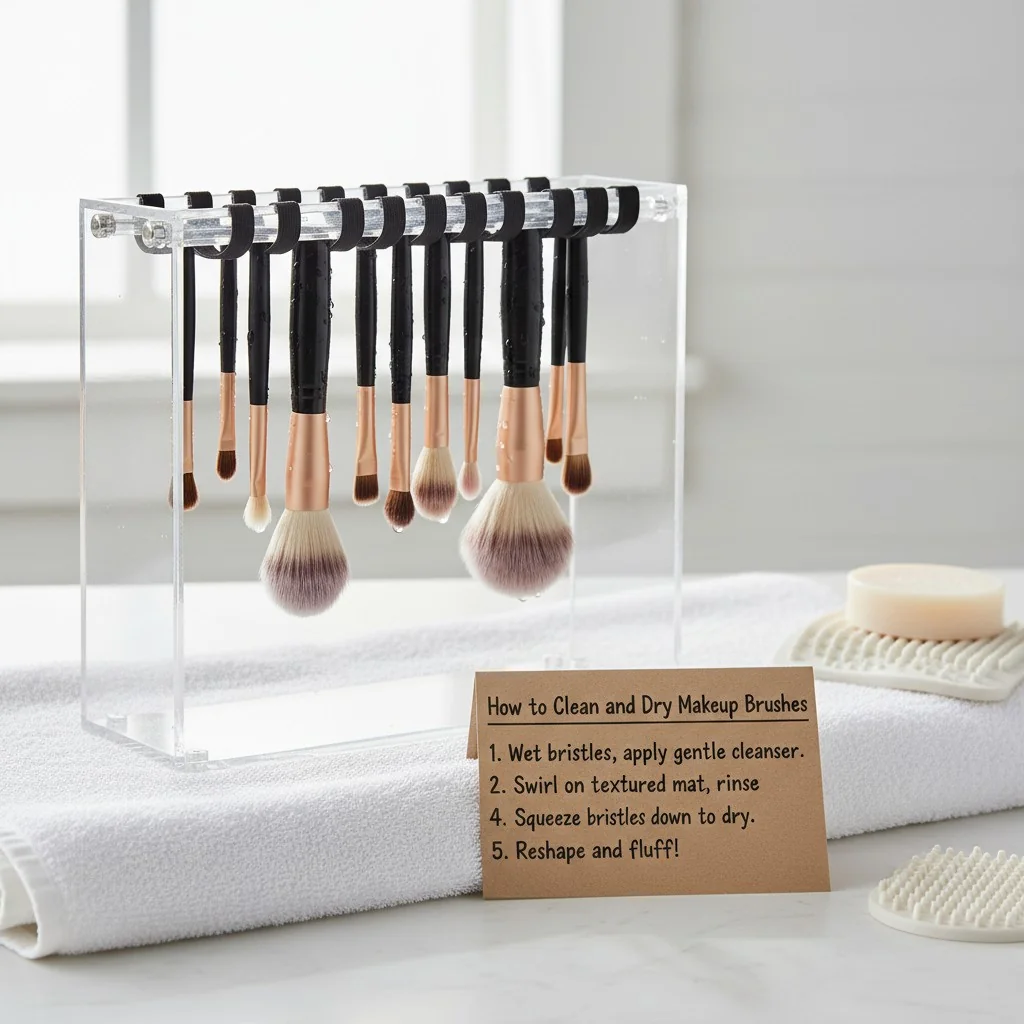
The number one reason I see for premature brush failure in professional kits is improper cleaning. Harsh detergents and water getting into the ferrule are silent killers of even the highest-quality brushes. A good cleaning SOP is the best way to maximize the lifespan of your tools.
Here is the exact process I recommend for both pro artists and consumers:
The Pro Hygiene Workflow
- Spot-Cleaning (After Each Use): For professionals, this is mandatory between clients. Use a spray-on brush cleanser on a paper towel and gently swirl the brush to remove surface-level product. This is for quick sanitization, not a deep clean.
- Deep-Cleaning (Weekly or Every 7-10 Days): This is the full wash. Use a gentle cleanser—a mild face wash or a dedicated professional brush soap works best. Avoid dish soap, as it can be too harsh on both natural and synthetic fibers.
- The "No-Soak" Rule: Never submerge the entire brush head in water. This allows water to seep into the ferrule, where it will dissolve the glue and cause shedding. Wet only the bristles.
- Drying Protocol: Gently squeeze out excess water with a towel. Reshape the bristles with your fingers. Lay the brushes flat on the edge of a counter with the bristles hanging over the edge, or dry them bristles-down in a brush holder. Never dry them bristles-up in a cup, as water will run down into the handle.
Following this simple routine will dramatically extend the life of your brushes and ensure they are always safe to use on skin.
Data Table: Replacement Windows by Brush Type
To make things easier, I’ve compiled industry data and my own manufacturing insights into a single table. Use this as a guide for your procurement and hygiene policies.
| Brush Type | Material | Primary Use | cleaning frequency8 (Spot/Deep) | Recommended Replacement Window (Pro vs. Consumer) | Trigger Signs to Replace | Sources (Year) |
|---|---|---|---|---|---|---|
| Foundation/Concealer | Synthetic | Cream/Liquid | Daily / Weekly | Pro: 24-36 mos; Consumer: 3-5 yrs | Fraying, Streaking, Residue | AAD, Byrdie (2023) |
| Powder/Blush | Natural/Synthetic | Powder | As needed / Weekly | Pro: 24-48 mos; Consumer: 3-5+ yrs | Shedding, Shape Loss, Scratchy | Brand Editorials (2022) |
| Eyeshadow Blender | Natural/Synthetic | Powder | As needed / Weekly | Pro: 24-48 mos; Consumer: 3-5+ yrs | Shape Loss, Poor Blending | Dermatologists (2023) |
| Eyeliner/Lip | Synthetic | Cream/Gel/Liquid | Daily / Weekly | Pro: 24-36 mos; Consumer: 2-4 yrs | Stiff Bristles, Shape Loss | Brushino Internal QC |
| Makeup Sponge | Foam | Cream/Liquid | Daily / Weekly | Pro: 3-6 mos; Consumer: 3-6 mos | Tears, Stains, Odor | Expert Consensus (2023-2025) |
Sources: Data compiled from American Academy of Dermatology (AAD) recommendations via Byrdie (2023), various brand editorials (2022), and dermatologist insights (2023).
Frequently Asked Questions
Do brushes expire on a fixed schedule?
No. Lifespan depends on quality, care, and how you use them. Use timeframes like 2–5 years as a planning guide, but always replace a brush when it shows signs of failure.
Are natural hair brushes more delicate?
Yes. They are like human hair and can be damaged by harsh soaps or heat. I recommend using a gentle cleanser and occasionally conditioning them. They can last a very long time if used only for powders and cared for properly.
How often should brands sanitize in-store testers?
After every single use. The best practice is to have multiple sets that can be rotated out for daily deep cleaning. For testers, synthetic fibers are better because they hold up to constant sanitizing sprays.
What causes skin irritation from brushes?
Usually, it’s a buildup of bacteria, old makeup, and oil. Frayed, scratchy bristles can also cause irritation. Regular cleaning is the best way to prevent this.
Can I fix a loose ferrule?
For personal use, you can try using a strong adhesive. But for a professional kit, I say no. A DIY repair can trap moisture and bacteria, creating a hygiene risk. It’s safer to just replace the brush.
Conclusion
Replace brushes based on performance and hygiene, not a rigid calendar. A well-cared-for brush can last for years, so focus on proper cleaning and regular inspections to guide your decisions.
References
-
Understanding how to care for makeup brushes can significantly extend their lifespan and improve application quality. ↩
-
Exploring hygiene in makeup application can help prevent skin issues and ensure a safe experience for users. ↩
-
Knowing the replacement schedule for professional kits is crucial for maintaining client safety and product performance. ↩
-
Knowing the replacement schedule for sponges is essential for maintaining hygiene and preventing skin issues. ↩
-
Understanding the causes of skin irritation can help you choose the right brushes and maintain healthy skin. ↩
-
Discovering the benefits of synthetic brushes can help you make informed choices for your makeup application. ↩
-
Understanding the differences between brush types can guide your selection based on your makeup needs. ↩
-
Learning the right cleaning frequency can help protect your skin and extend the life of your brushes. ↩


